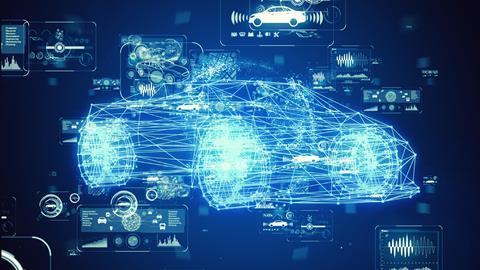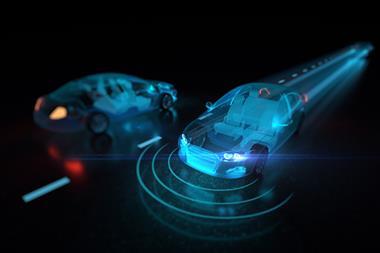As more sophisticated technology becomes commonplace in cars, the cost of repair will fall in the long-term, predicts the insurer’s claims director
Higher repair costs associated with the use of more sophisticated technology in cars may lead to a short-term increase in claims costs, but it won’t cause blanket claims inflation, according to Robin Challand, claims director at Ageas UK.
He told Insurance Times that the increased use of technology in vehicles will “without doubt” bump up costs across the claims process – particularly around repair – however this is a short-term issue that will be resolved naturally as more complicated technology becomes commonplace in cars.
“The compensating factor in time will be if more and more vehicles have got the technology, then the price will naturally fall over time,” he said. “[Claims costs] will [rise] in the short-term. Longer term, not necessarily so.
“If I look at some of the vehicles, particularly electric vehicles, that are coming to market now, they’re often variants of the existing combustion engine vehicle. The body panels, the interior fixtures and fittings - some of those core components are common with the existing vehicle.
“It’s not a single approach to inflation – it’s not going to go up across the piece; it will depend on the nature of the accident and the location of the damage within the vehicle.”
Challand added that “we will see some inflation”, however he does not “think it’s necessarily as severe as saying the entire costs of the claim will go up exponentially due to the technology because some of that technology is already in place”.
He continued: “Vehicles are often following a traditional vehicle style, they’re just having the electric component added to them rather than the combustion engine. It does depend on the nature of the accident, but there will be a mixture of inflation.”

Reduced accidents
Talking on autonomous vehicles and advanced driver assistance systems (ADAS), Challand said that the impact on claims here is two-fold: although the quality of the technology could ramp up repair prices, in the longer-term it could also reduce certain types of accidents, leading to lower claims costs.
He explained: “You’ve got the impact of that through technology and the challenge that has in the repair process. The number of driver aids we see get ever more complex and both the repair and calibration we need to think about in terms of a repair and claims process.
“We work with our solution centres and the partners we work with across that; we make sure that we’ve got that capability for our customers’ vehicles.
“On the other side of things, in theory, a lot of the vehicles have got much better detection driver assistance technology built in and I would predict that we will see a continued reduction in certain accident types with it, whether that’s own damage, third party damage or injury.
“The trend is only one way, but it covers a whole spectrum of different accidents and different parts of the claims process.”
Onset of automation
For Challand, autonomous vehicles and technology such as the automated lane keeping system (ALKS) is “coming”.
“I don’t think we can get away from it,” he added. “Potentially, in the first half of [2021], we could see some vehicles on our roads, motorways, dual carriageways, which are autonomous. I think it will grab the headlines and I think there will be a percentage of vehicles on the roads.”
Despite the attention on automation, “more importantly will be the move to reducing emissions and, by definition, the move to electric and hybrid vehicles”, Challand continued.
This links to prime minister Boris Johnson’s 10-point plan for a “green industrial revolution”, which he announced last November.
As part of this, the sale of new petrol and diesel cars and vans in the UK will end by 2030, a full 10 years earlier than previously planned. The sale of hybrid cars and vans “that can drive a significant distance with no carbon coming out of the tailpipe” will be allowed until 2035, however.
“[Automated vehicles are] interesting and it’s one that we shouldn’t lose sight of as an industry, but the more immediate challenge in the next four, five years will be the government pushing the move to electric and hybrid vehicles,” Challand added.
Hosted by comedian and actor Tom Allen, 34 Gold, 23 Silver and 22 Bronze awards were handed out across an amazing 34 categories recognising brilliance and innovation right across the breadth of UK general insurance.





















































No comments yet